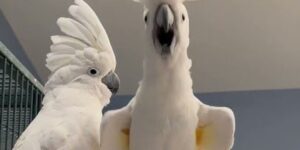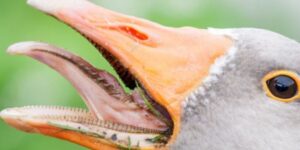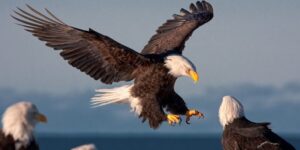Introduction
Water birds, often seen gracefully gliding over lakes, rivers, and coastal regions, are a vital part of aquatic ecosystems. These birds, which include species like ducks, swans, and herons, are uniquely adapted to life in and around water. Their bodies are designed for swimming, diving, and wading, with specialized features such as webbed feet and waterproof feathers. Additionally, water birds play a crucial role in maintaining the balance of their habitats by controlling insect populations, spreading plant seeds, and serving as an important food source for predators. However, their existence is increasingly threatened by habitat loss, pollution, and climate change. As we continue to encroach on natural spaces, it becomes even more important to protect these fascinating creatures and their habitats, ensuring that future generations can continue to witness the beauty and diversity of water bird species.
Exploring the World of Water Birds: Fascinating Facts and Species
Water birds exhibit remarkable adaptations that allow them to thrive in aquatic environments. From their unique feeding habits to specialized bodies designed for swimming or diving, each species showcases nature’s creativity.
The most well-known water birds include ducks, geese, and herons. These fascinating creatures not only bring beauty to our landscapes but also play essential roles in their ecosystems by controlling insect populations and dispersing seeds. Their diversity is a testament to evolution’s ability to adapt to life for survival.
Water Birds :Evolution
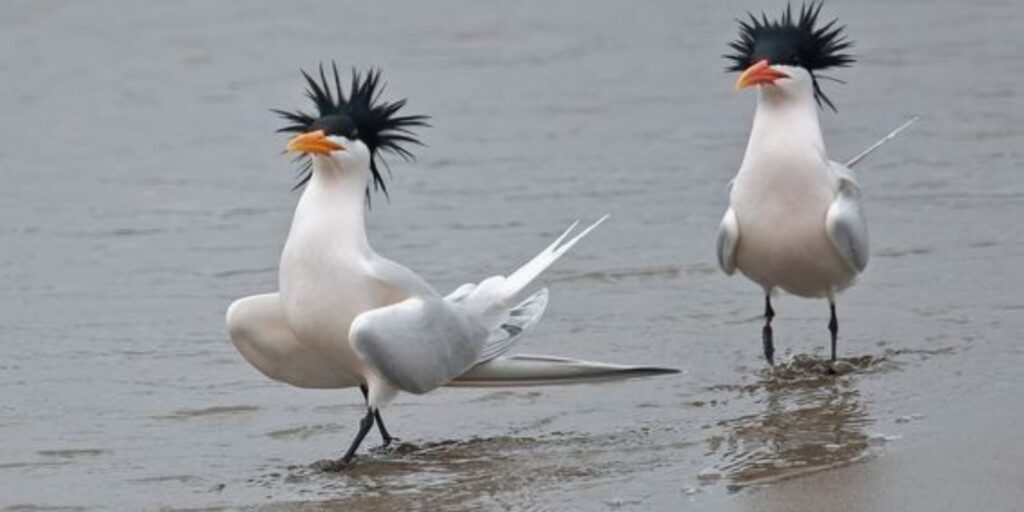
Water birds have evolved over millions of years, adapting to diverse aquatic environments. Their unique traits, such as webbed feet and specialized bills, help them thrive in various habitats.
These adaptations enable water birds to hunt for food efficiently and navigate through wetlands, lakes, and rivers. From the graceful swan to the agile duck, each species showcases a remarkable evolutionary journey shaped by their surroundings. Evolution is a continuous process that shapes their existence today.
Water Birds :Conservation
Water birds play a crucial role in maintaining healthy ecosystems. Conservation efforts aim to protect their habitats, ensuring these species thrive. Wetlands are particularly important, serving as breeding grounds and feeding areas.
Organizations worldwide work tirelessly to combat threats like pollution and habitat loss. Engaging local communities is vital for raising awareness about the significance of water birds. By fostering appreciation and understanding, we can encourage sustainable practices that benefit both wildlife and humans alike.
Water Birds :Extinction
Extinction is a significant threat to water birds, driven by habitat loss, climate change, and pollution. Many species have vanished from our skies due to human activities that disrupt their ecosystems. Their absence leaves a gap in biodiversity.
The decline in water bird populations affects entire food webs. When these birds disappear, the balance of aquatic environments shifts dramatically. This highlights the urgent need for conservation efforts to protect remaining species and restore their habitats before it’s too late.
Interspecific Competition
Interspecific competition occurs when different species compete for the same resources, such as food, nesting sites, and habitat. This struggle can shape populations and affect their survival. Water birds often find themselves in a fierce rivalry over limited supplies.
For instance, ducks and geese may vie for the best feeding spots during migration. Such interactions help maintain ecological balance but can also lead to changes in bird behavior and distribution as they adapt to shared environments.
Water Birds :Diseases
Water birds face various diseases that can significantly impact their populations. Infectious agents like viruses, bacteria, and parasites thrive in wetland habitats, affecting the health of these avian species.
One notable threat is the Duck Enteritis Virus (DEV), which can devastate waterfowl communities. Understanding these diseases is crucial for conservation efforts to protect water birds and preserve their ecosystems from further decline. Monitoring health trends helps ensure their survival amid changing environmental conditions.
Duck Enteritis Virus (DEV)
Duck Enteritis Virus (DEV) poses a significant threat to water birds, particularly ducks. This highly contagious virus can lead to severe outbreaks, causing high mortality rates among affected populations. The disease primarily spreads through direct contact or contaminated environments.
Symptoms often include sudden death, lethargy, and neurological signs. Effective management strategies are vital for preventing the spread of DEV in both wild and domestic duck populations. Understanding this virus is crucial for maintaining healthy water bird ecosystems.
Water Birds Species
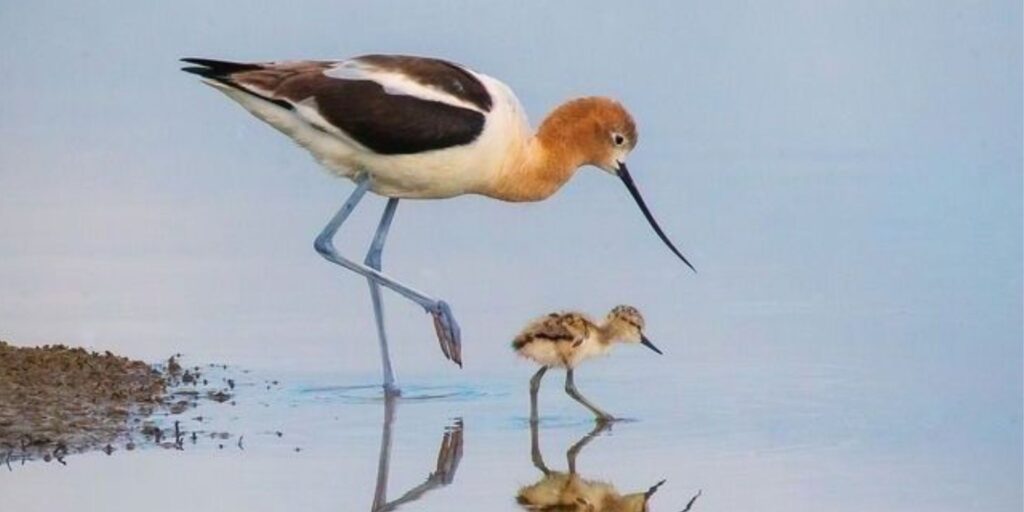
Water birds are a diverse group, showcasing incredible adaptations for life in aquatic environments. These species range from ducks and geese to elegant waders and vibrant shorebirds, each playing an essential role in their ecosystems.
Among the most recognized waterbird species is the American coot, known for its striking black plumage. The Canada goose offers a familiar sight with its iconic honk, while the common loon captivates with haunting calls echoing across lakes. Each bird adds unique beauty to our wetlands.
Water Birds :American Coot
The American Coot is a unique water bird found in wetlands across North America. With its striking black plumage and distinctive white bill, it’s often mistaken for a small duck. These birds are agile swimmers, using their lobed toes to navigate through the water gracefully.
They primarily feed on aquatic plants and insects, making them an essential part of their ecosystem. During the breeding season, you can spot them building floating nests anchored among reeds or cattails.
Bufflehead
The Bufflehead is a small, striking duck known for its bold plumage. Males sport a distinctive black and white pattern with an iridescent greenish-purple head, while females are more understated in brown and gray. These ducks can be found across North America during the winter months.
Buffleheads are agile divers, often plunging beneath the surface to hunt for small fish and invertebrates. Their playful behavior and quick movements make them a delightful sight on serene lakes or ponds.
Canada Goose
The Canada Goose is a striking bird known for its distinctive black head and white cheek patches. These large water birds are often seen gracefully gliding across lakes or honking in unison as they fly in V-formation. Their ability to adapt has made them common across North America.
During migration, Canada Geese can travel thousands of miles, seeking warmer climates. They are also social creatures, forming strong family bonds that last throughout the year. Their presence adds charm to any wetland ecosystem.
Water Birds :Common Loon
The Common Loon is a striking water bird known for its distinctive black and white plumage. With haunting calls echoing across northern lakes, this species captures the essence of wilderness. Their sharp hunting skills make them exceptional in catching fish underwater.
During the breeding season, they are fiercely territorial. Nesting close to shorelines, they rely on their camouflaged appearance to protect their young from predators. Observing these magnificent birds in their natural habitat creates an unforgettable experience for nature lovers.
Water Birds :Common Merganser
The Common Merganser is a striking water bird known for its sleek body and distinctive coloration. With its long, slender bill, this duck specializes in catching fish, making it an agile swimmer in both freshwater and coastal habitats.
Males feature a glossy green head contrasted with white sides, while females showcase soft brown plumage. These birds are often seen diving underwater to chase their prey. Their unique adaptations make them fascinating subjects for birdwatchers and nature enthusiasts alike.
Eared Grebe
The Eared Grebe is a captivating water bird known for its striking appearance. With its sleek black and chestnut plumage, it’s easily recognizable during the breeding season. Its distinctive yellow “ears” add to its charm, making it a favorite among bird watchers.
This species thrives in freshwater lakes and marshes, where it dives skillfully for small fish and aquatic insects. During migration, they often gather in large flocks, creating stunning spectacles on serene waters.
Green-winged Teal
The Green-winged Teal is a small dabbling duck known for its striking appearance. Males showcase a vibrant green patch on their wings, complemented by chestnut-colored heads and intricate patterns across their bodies. Their beauty makes them a favorite among birdwatchers.
These ducks are highly adaptable and can be found in various habitats, from freshwater ponds to marshes. They feed primarily on aquatic plants and seeds, making them essential players in maintaining ecosystem balance.
Mallard
The Mallard is one of the most recognizable water birds, often seen gliding across ponds and lakes. Males boast striking green heads, while females sport a more muted brown plumage for camouflage. This adaptability allows them to thrive in various habitats.
Mallards are social creatures, frequently forming large flocks during migration. Their distinct quacking calls resonate through wetlands, making them beloved among birdwatchers and nature enthusiasts alike. These ducks play an essential role in aquatic ecosystems, contributing to biodiversity.
Aequornithes
Aequornithes is a fascinating clade of water birds that includes many familiar species. These birds are well-adapted to aquatic environments, showcasing unique physical traits like webbed feet and elongated bodies. Their adaptations allow them to thrive in various habitats, from freshwater lakes to coastal shores.
This group encompasses diverse families such as herons and ibises. Each member plays a crucial role in its ecosystem, contributing to the balance of nature through their feeding habits and interactions with other wildlife.
Phylogeny
Phylogeny explores the evolutionary relationships among water birds, revealing their complex lineage. By analyzing genetic data and physical characteristics, scientists can trace back the ancestry of various species.
This understanding helps classify water birds into distinct groups based on shared traits. It also highlights how adaptations have enabled them to thrive in aquatic environments. Each branch of this diverse family tree tells a unique story about survival and evolution in different habitats.
Featured Water Bird Species
The world of water birds is rich with diversity, showcasing unique adaptations. The Australasian Bittern, for instance, is a master of camouflage among reeds, while the Australian Pelican boasts an impressive wingspan and striking bill.
Other fascinating species include the Black Swan, known for its elegant neck and distinctive color. The Buff-banded Rail thrives in various wetlands, demonstrating remarkable resilience. Each bird plays a crucial role in their ecosystem, making them essential to our natural world.
Australasian Bittern
The Australasian Bittern is a remarkable water bird known for its distinctive booming call. This secretive creature often hides among reeds and wetlands, making it challenging to spot in the wild. Its plumage, a blend of browns and tans, provides excellent camouflage.
These birds are primarily nocturnal hunters, feeding on fish, frogs, and other aquatic creatures. Their long necks and sharp beaks allow them to catch prey with precision. Despite their elusive nature, they play a vital role in wetland ecosystems.
Australasian Darter
The Australasian Darter, often called the “snake bird,” is known for its unique swimming style. It glides through the water with just its long neck and head visible, resembling a snake hunting for prey. This striking bird has a slender body and beautiful plumage that blends seamlessly into its watery habitat.
These darters primarily feed on fish, using their sharp beaks to spear them underwater. Nesting in trees near wetlands, they are wonderfully adapted to aquatic life while showcasing incredible grace in flight.
Australian Pelican
The Australian Pelican is an iconic water bird known for its impressive size and distinctive long bill. With a wingspan reaching up to 2.5 meters, these birds glide gracefully over coastal waters and lakes. Their striking black-and-white plumage makes them easily recognizable.
These pelicans are skilled fishers, using their unique bills like nets to catch prey. They often hunt in groups, showcasing remarkable teamwork as they drive fish into shallow areas for easier capture.
Black Swan
The Black Swan is a striking water bird known for its elegant all-black plumage and vibrant red bill. Native to Australia, this species often graces lakes and wetlands. They are social creatures, frequently seen gliding gracefully in pairs or larger groups.
These swans are herbivorous, feeding mainly on aquatic plants. Their strong necks enable them to reach deep underwater vegetation. With their captivating presence, Black Swans have become symbols of beauty and elegance in many cultures worldwide.
Buff-banded Rail
The Buff-banded Rail is a captivating bird found across Australia and New Guinea. Known for its unique buff-colored bands on the flanks, this secretive species often lurks in dense vegetation near wetlands. Its striking appearance makes it a favorite among birdwatchers.
These rails are primarily ground-dwelling and rely on their camouflage to evade predators. They are also known for their distinctive calls, which echo through marshes at dusk. Their adaptability allows them to thrive in various habitats, from swamps to rice paddies.
Eurasian Coot
The Eurasian Coot is a distinctive water bird known for its striking black plumage and white frontal shield. This medium-sized bird inhabits wetlands, lakes, and rivers across Europe, Asia, and North Africa.
Often seen dabbling in shallow waters, coots feed on aquatic plants and small invertebrates. Their unique behavior includes diving swiftly to evade predators or competing birds. With their strong legs and lobed toes, they are agile swimmers who can navigate through dense vegetation effortlessly.
Glossy Ibis
The Glossy Ibis is a striking bird known for its iridescent plumage, shimmering in hues of green and purple. This medium-sized wader thrives in wetland habitats, often seen foraging among reeds and shallow waters.
With a long, curved bill, it skillfully probes mudflats for insects and crustaceans. These birds are social creatures, frequently spotted in flocks during migration. Their graceful flight patterns add to their allure as they navigate the skies with ease.
Water Birds in Eco Systems
Water birds play a vital role in aquatic ecosystems. They contribute to nutrient cycling by feeding on fish and invertebrates, which helps maintain the balance of these environments. Their foraging behavior can also control populations of certain prey species.
Moreover, water birds serve as indicators of environmental health. A decline in their numbers often signals changes or degradation within wetlands and lakes. By monitoring these bird populations, conservationists can gauge ecosystem vitality effectively, guiding preservation efforts.
RICELAND BIRDS
RICELAND BIRDS thrive in wetland ecosystems, where rice fields offer rich feeding grounds. These birds benefit from the abundance of insects and aquatic plants that flourish in these flooded areas.
Species like herons and egrets often forage among the tall grasses, while ducks and shorebirds take advantage of shallow water for breeding and nesting. This unique habitat supports diverse bird populations, making rice lands essential for ecological balance and biodiversity preservation.
Wading Birds
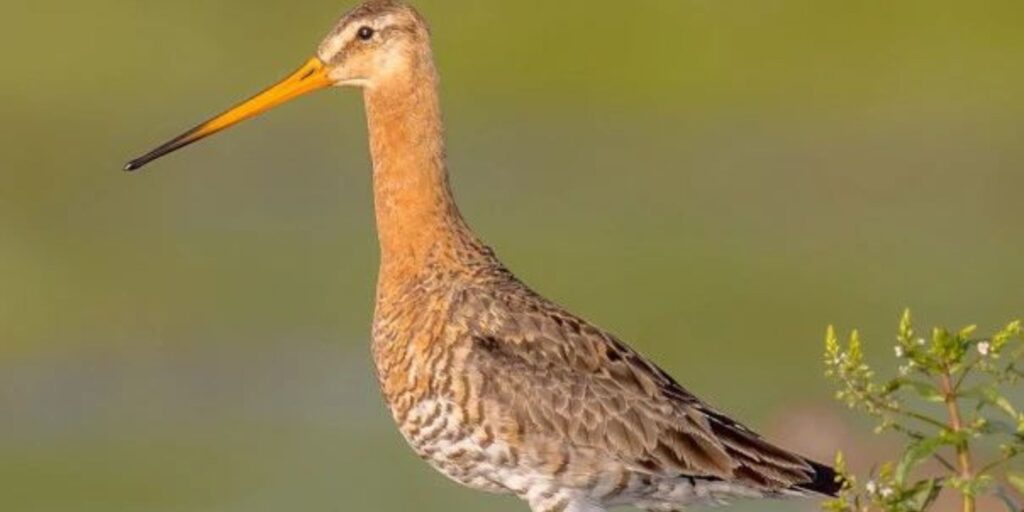
Wading birds are captivating creatures, often seen standing gracefully at the water’s edge. Their long legs and slender bodies allow them to navigate shallow wetlands with ease. These birds include herons, egrets, and storks, each showcasing unique hunting techniques.
As they sift through mud or probe in the sand for food, wading birds play a vital role in their ecosystems. They help control fish populations while also maintaining healthy aquatic habitats by balancing prey dynamics.
Shorebirds
Shorebirds are a diverse group that inhabit coastal regions, mudflats, and estuaries. They have long legs and slender bodies, making them agile foragers. These birds can be found probing the sand or skimming the water’s surface in search of food.
Their migratory patterns are remarkable, with some species traveling thousands of miles between breeding grounds and winter habitats. Shorebirds play an essential role in maintaining ecosystem health by controlling insect populations and serving as indicators of environmental changes.
Raptors
Raptors, also known as birds of prey, are remarkable water birds that dominate their ecosystems. With keen eyesight and powerful talons, they hunt fish and small mammals along coastal areas or riverbanks.
These agile hunters include species like ospreys and bald eagles. Their presence indicates a healthy environment, showcasing the intricate balance within aquatic habitats. Observing raptors in action is an unforgettable experience for bird enthusiasts and nature lovers alike.
Waterfowl
Waterfowl represent a captivating group within the diverse category of water birds. These species, including ducks, geese, and swans, are essential to aquatic ecosystems. They play vital roles in seed dispersal and maintaining plant life balance.
Many waterfowl are migratory, traveling long distances seasonally. This journey connects different habitats and ecosystems across various regions. Their adaptability to changing environments showcases their resilience.
Conservation efforts remain crucial for protecting these magnificent creatures as they face habitat loss and climate change challenges. By understanding the significance of waterfowl in our world, we can appreciate their beauty while contributing to their preservation for future generations.
